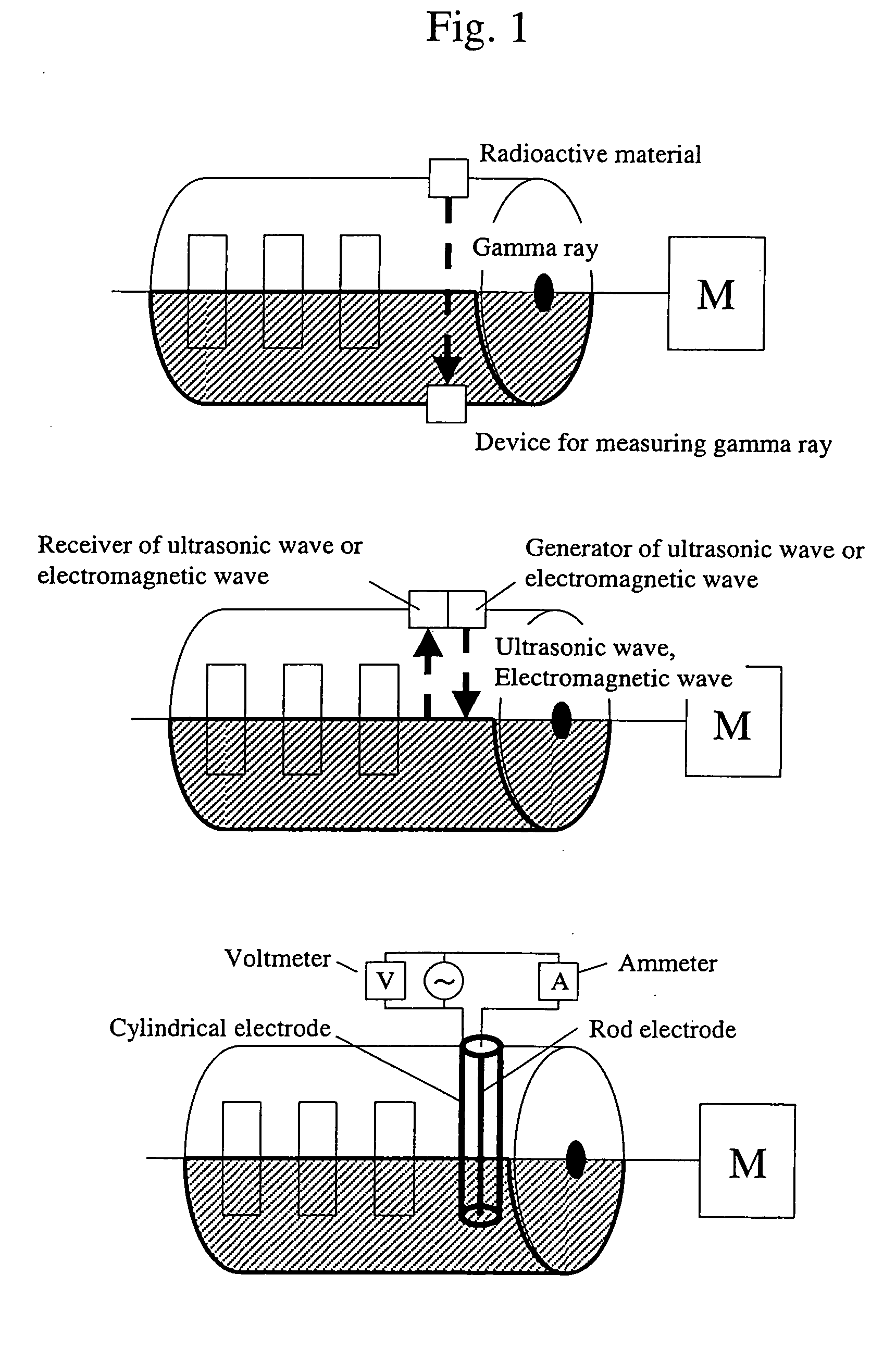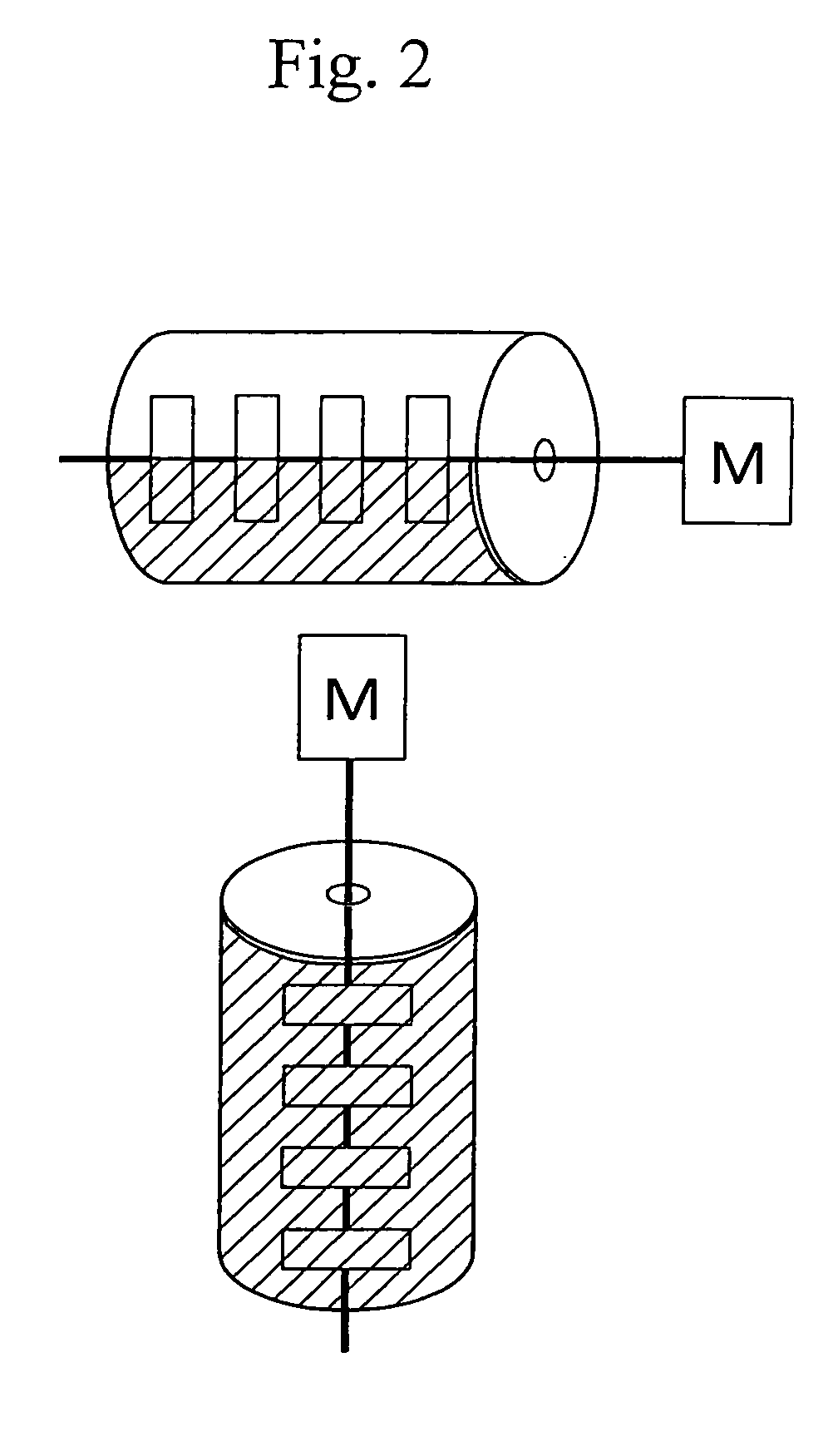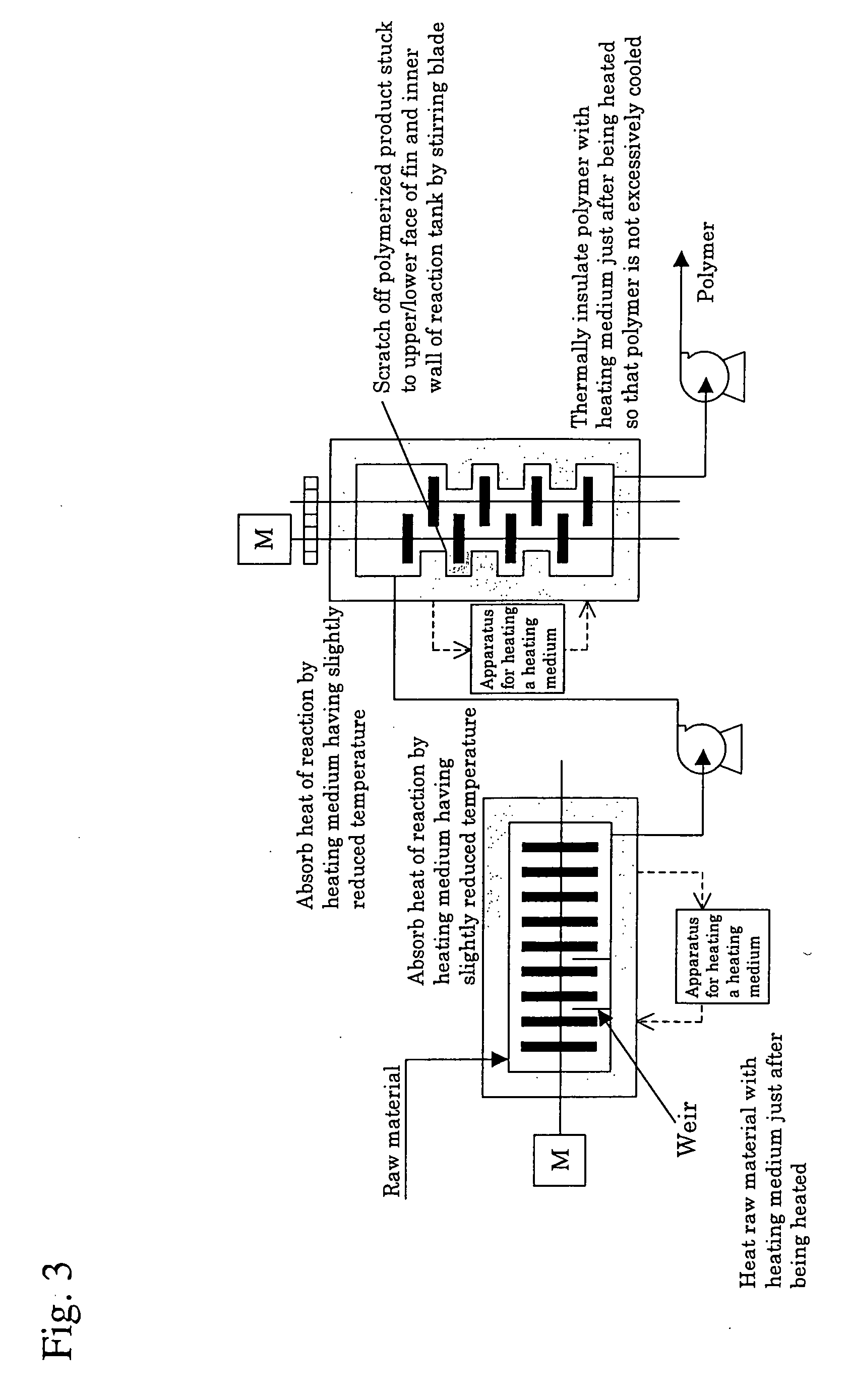Polymerization processor
- Summary
- Abstract
- Description
- Claims
- Application Information
AI Technical Summary
Benefits of technology
Problems solved by technology
Method used
Image
Examples
example 1
[0072] As one example of a polymerization processor of the present invention, example of a processor for synthesizing polylactic acid is shown in FIG. 4. In this Example, polylactic acid is synthesized using a processor comprising an apparatus for supplying lactide 1, an apparatus for melting lactide 2, an apparatus for supplying a catalyst 3, an apparatus for supplying lactide 4, a horizontal reaction tank 5, a vertical reaction tank 6, an apparatus for removing remaining lactide 7, liquid feeding pumps 8 to 13 and valves 14 to 29. In this Example, a reactor having the horizontal reaction tank 5 and the vertical reaction tank 6 connected in series is used as a reactor. The liquid feeding pumps 8 to 13 may be in part omitted if the viscosity of a liquid to be transported is so low that the liquid can be fed using gravity or the like. Furthermore, the valves 14 to 25 may also be omitted.
[0073] The apparatus for supplying lactide 1 supplies powdered lactide to the apparatus for melti...
example 2
[0080] Polylactic acid was synthesized by the processor shown in Example 1. The temperature of the apparatus for melting lactide 2 was set to 120° C., and molten lactide (molecular weight: 144) having a catalyst and a polymerization initiator dispersed therein was supplied to the horizontal reaction tank 5 at 120° C. In the horizontal reaction tank 5, the average temperature of the reaction solution was kept at 170° C. and the retention time thereof was kept at 10 hours. In the first half of the retention time, the reaction solution was heated by heat conduction from a jacket around the periphery of the reaction tank and in the second half, the temperature of the polymerized product itself increased due to heat of reaction associated with polymerization, but part of heat of reaction was removed via the inner wall of the reaction tank by heat conduction. Polylactic acid discharged from the horizontal reaction tank had a conversion ratio of 55% (calculated as conversion ratio=1—concen...
PUM
| Property | Measurement | Unit |
|---|---|---|
| Temperature | aaaaa | aaaaa |
| Gravity | aaaaa | aaaaa |
| Melting point | aaaaa | aaaaa |
Abstract
Description
Claims
Application Information
 Login to View More
Login to View More - R&D
- Intellectual Property
- Life Sciences
- Materials
- Tech Scout
- Unparalleled Data Quality
- Higher Quality Content
- 60% Fewer Hallucinations
Browse by: Latest US Patents, China's latest patents, Technical Efficacy Thesaurus, Application Domain, Technology Topic, Popular Technical Reports.
© 2025 PatSnap. All rights reserved.Legal|Privacy policy|Modern Slavery Act Transparency Statement|Sitemap|About US| Contact US: help@patsnap.com



